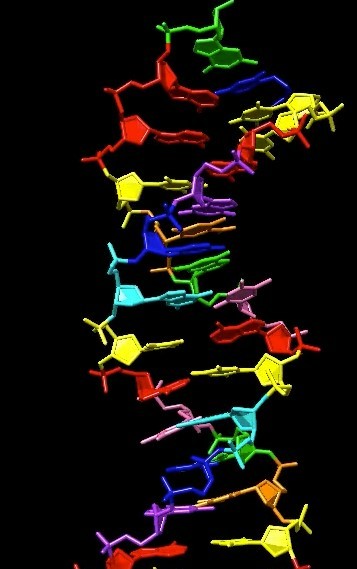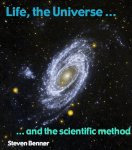SciTechDaily last week picked up a press release reporting that work at The Scripps Research Institute (La Jolla) “boosts [a] theory that life on our planet arose from [a] RNA-DNA mix”.
The work appeared in the journal Angewandte Chemie, arguably the top scientific journal in the world today focused on things chemical.
It was fine chemistry. But the conclusion was wrong … or at least it contradicts what we think is true about how biological information must be stored and transmitted in molecular form.
Just 28 words in that last sentence, and we are already “in deep epistemology”. But that is what we do here. So let’s have a go.
Many scientists, having read the work of Karl Popper, think that a proposition is “scientific” if it can be “disproven”.
However, as we often discuss, disproof is also elusive, even for the most “scientific” of propositions. This is the “Quine-Duhem thesis“; the key phrase is “auxiliary assumptions”.
However, as logicians Quine and Duhem note, we can ask whether a scientific proposition that we like (for example, the one from the Scripps press release) is logically compatible with other scientific propositions, maybe ones that we also like. For example, this proposition:
(a) “Life on our planet arose with a biopolymer whose building blocks fit into an aperiodic crystal structure”.
Quine and Duhem now ask: Is proposition (a) logically consistent with proposition (b)?
(b) “Life on our planet arose from [a] RNA-DNA mix”
Whoa, you say. What does that even mean? We go still deeper.
Darwinian evolution is thought to be the only mechanism by which matter can organize itself to give properties that we value in life. Thus, the origin of life on Earth is, it would seem, intimately connected to the origin of Darwinian evolution on Earth.
Darwinian evolution, in turn, seems to require an informational polymer, a string of building blocks whose order holds the information that determines how an organism behaves. This behavior, in turn, determines its fitness, whether the organism dies before it lives long enough to (get married and) reproduce.
In humans, that informational polymer is DNA. In the coronavirus presently plaguing us, that informational polymer is RNA. Each has four building blocks.
But not just any polymer will do. It must also be possible to copy that polymer with a high degree of accuracy. Too many mistakes, and the system suffers an “error catastrophe”. Fitness is lost faster than purifying selection can restore it.
Nearly 80 years ago, the noted physicist Erwin Schrödinger (as in “Schrödinger’s equation” and “Schrödinger’s cat”) pointed out that simple binding was not sufficient to support replication of organism-sized amounts of information without error catastrophes. Rather, the exchange of building blocks must not change the overall structure of the “double helix”, the famous structure of Watson and Crick.
These were not quite his words. In Schrödinger’s words, although the building blocks in an informational polymer must differ in small details, to encode information, they must all fit into an “aperiodic crystal structure”. The must all have very similar sizes and shapes.
The reason for this is well known to students in organic chemistry labs. Here, their grades are determined by the sharpness of the melting points of the crystals of the compounds that they have been asked to isolate. This melting is a “phase transition”, like the melting of solid ice to give water in its liquid phase. Even small amounts of impurities greatly lower the stability of a crystal, and lower and broaden its melting point. The technical skills of the students are graded by their ability to keep those impurities out.
The ability of a biopolymer to transfer information is also determined by the sharpness of its melting point. The biopolymer gets a good grade if it can keep impurities, defects, and most mutations out of your kid’s DNA.
Schrödinger taught the value of this phase transition physics in molecular genetics. For genetic information to be preserved in pairing for information transfer, the correctly paired DNA must be substantially more stable than the DNA with even a single mispair. The “melting” of a perfectly paired double helix is sharp.
And this can happen only if the building blocks of the DNA are all nearly the same size and shape. Only phase transition physics can ensure the high fidelity of genetic replication needed to avoid error catastrophe.
Or, at least, that is what proposition (a) says.
The proposition has predictive value, the best empirical metric of any proposition in science, and synthetic biologists have used Schrödinger’s insight to create new genetic molecules. For example, scientists at the Foundation for Applied Molecular Evolution were quite attentive to Schrödinger’s insight when we created synthetic polymers with six and eight building blocks. These all fit an aperiodic crystal structure. The expanded DNA (see the picture) stores information with adequate precision to support evolution. Indeed, scientists at the Foundation have evolved such expanded DNA to create molecules that bind cancer cells and deliver toxic drugs to kill them.
FfAME scientists have also made “fat” and “skinny” genetic polymers that differ from the Watson-Crick aperiodic crystal. However, each forms its own kind of aperiodic crystal. Each by itself is an excellent storehouse for evolvable genetic information. Each might support Darwinian evolution in alien life on Mars or elsewhere in the Solar System.
But only if they are not “mixed”, a word from proposition (b). As soon as they are mixed, the aperiodic crystal structure is broken. Each system loses its ability to faithfully hold information. Phase transition physics no longer allows a mixed system to be replicated with fidelity. An error catastrophe ensues.
Now we have the background that we need to evaluate the headline from the press release from Scripps; we can now evaluate proposition (b):
(b) “Life on our planet arose from [a] RNA-DNA mix.”
Don’t be deceived by the letters “D” and “R” in front of the “NA”. DNA and RNA duplexes have very different structures. They do not fit the same aperiodic crystal structure. Therefore, mixed double helices (if they can be called such, as they have lost a regular structure) are not as stable as pure DNA:DNA double helices, or pure RNA:RNA double helices. Or even DNA:RNA double helices, where all of the building blocks in one strand are D and all in the other are R.
When “D” and ‘R” are mixed in a single strand, the “phase transition” property is lost. Strands with a mix of “D” and “R” have lower melting temperature; indeed, the Scripps paper mentions this fact. They also have broader melting temperatures, not the sharp melting temperatures needed to get an A grade in an organic chemistry lab.
If Schrödinger is right, that means that such mixed duplexes cannot support replication without error catastrophe. Which means that they cannot support Darwinian evolution. Which means that life on our planet did not arise from them.
A long way to get to this point.
If you have read this far, you might be disappointed. All that the Quine-Duhem analysis has told us is that proposition (a) and proposition (b) cannot both be correct in the same universe. One or the other must be wrong. Both might be wrong. But they both cannot be right.
And the wrong proposition might be the proposition from Schrödinger, not the proposition from Scripps.
In this light, SciTechDaily, Angewandte Chemie, and the authors themselves have all missed the important point of this work.
Life may have originated as a biopolymer that mixed differently shaped DNA and RNA building blocks. blocks that do not fit into aperiodic crystal. But if it did, then Schrödinger must be wrong. Also, much of our understanding of molecular recognition in biology must be wrong.
Possible? Of course.
One of the most important things we teach science students is to not discard a result if it contradicts what we “know” to be true. If we do, we will miss all of the major advances in science. So if someone tells you that water is H3O, not H2O, the correct response is not: “You need an education.” Or, in this case, “Go read Schrödinger”. Rather, the correct response is “How interesting”. And then you must start to list all of the (previously) accepted propositions that are logically impossible in a world where water is H3O.
There are many.
As there are if a DNA-RNA mix supported the first Darwinian evolution on Earth.
But if we accept the conclusion of the Angewandte paper, the headline from Scripps should not have been “life on our planet arose from [a] RNA-DNA mix”. Rather, it should have been “Much of what we think we know about biomolecular information is wrong.”
And that headline is worth a blog post.


